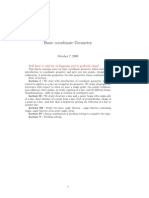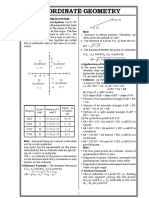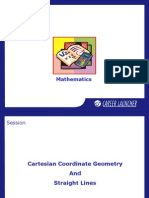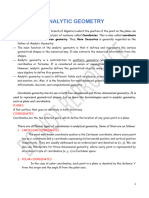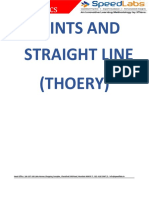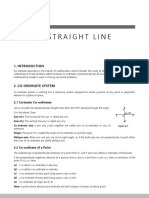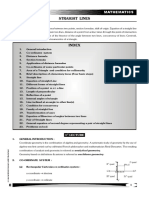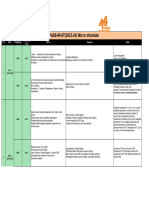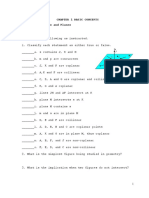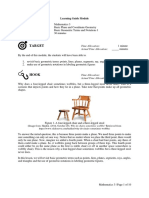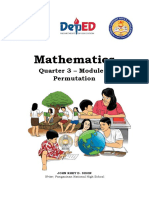0% found this document useful (0 votes)
505 views21 pagesBasic Coordinate Geometry Lecture
The document provides notes on basic coordinate geometry concepts including:
- Introduction to coordinate geometry and its relation to algebra.
- Properties of single points, two points (collinear, non-collinear), and three points.
- Equations of lines in different forms and transformations like shift of origin and rotation of axes.
- Relationships between points and lines like origin side, distance, image, and foot of perpendicular.
- Properties of two lines like parallel, intersecting, and angle bisectors.
- Linear combinations of lines and example problems.
Uploaded by
ruslanagCopyright
© Attribution Non-Commercial (BY-NC)
We take content rights seriously. If you suspect this is your content, claim it here.
Available Formats
Download as PDF, TXT or read online on Scribd
0% found this document useful (0 votes)
505 views21 pagesBasic Coordinate Geometry Lecture
The document provides notes on basic coordinate geometry concepts including:
- Introduction to coordinate geometry and its relation to algebra.
- Properties of single points, two points (collinear, non-collinear), and three points.
- Equations of lines in different forms and transformations like shift of origin and rotation of axes.
- Relationships between points and lines like origin side, distance, image, and foot of perpendicular.
- Properties of two lines like parallel, intersecting, and angle bisectors.
- Linear combinations of lines and example problems.
Uploaded by
ruslanagCopyright
© Attribution Non-Commercial (BY-NC)
We take content rights seriously. If you suspect this is your content, claim it here.
Available Formats
Download as PDF, TXT or read online on Scribd
/ 21

